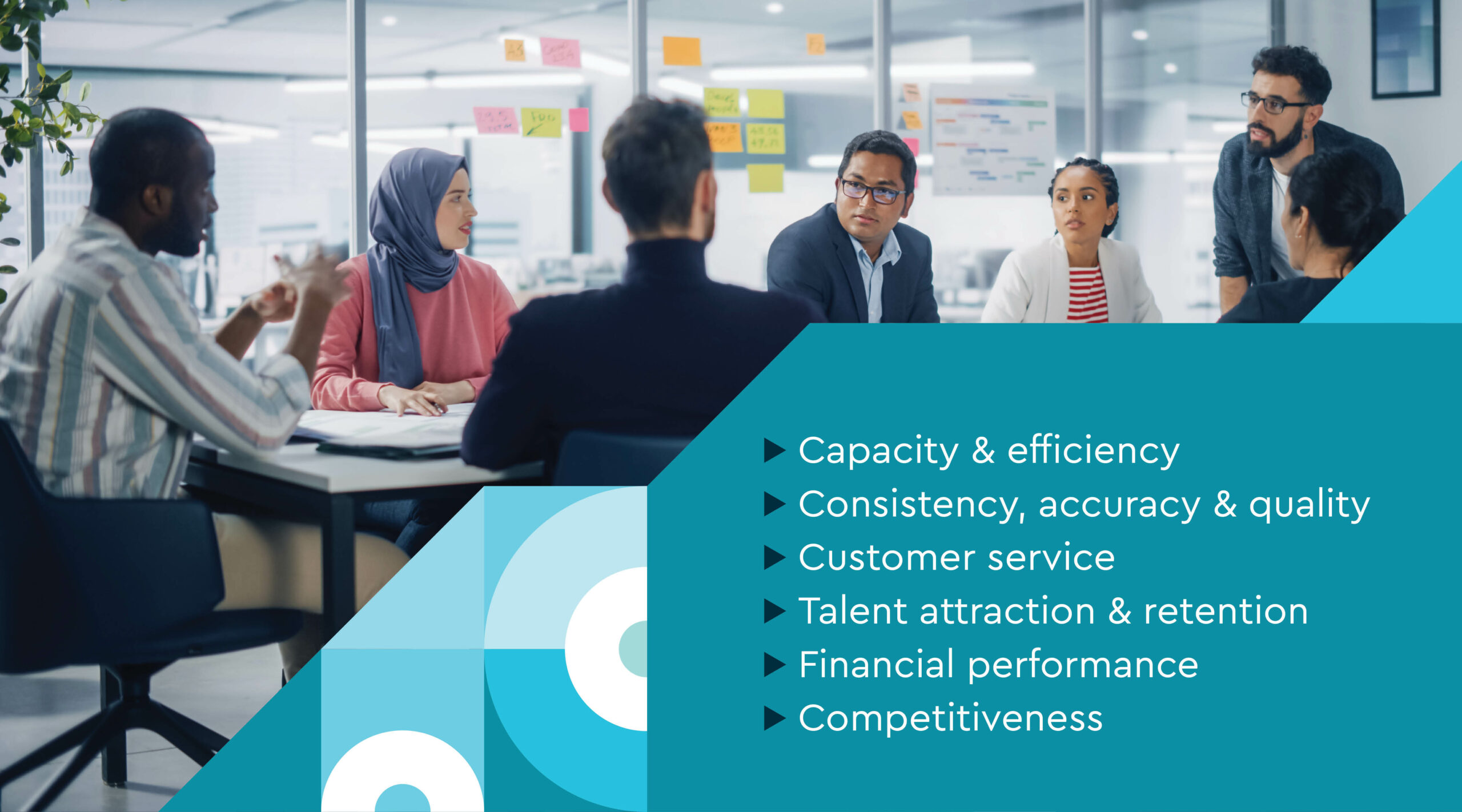Every accounting firm strives to deliver consistent, high-quality service. However, achieving this can be challenging due to varying processes and methods within the firm.
If your team often finds itself mired in inefficiencies and inconsistencies, it’s time to consider standardising your best practices with software designed for accounting firms. With the right tech stack, you can streamline operations, reduce errors, and enhance productivity and profitability.
Why Standardisation is Important for Your Firm’s Success
Standardisation is crucial for accounting firms aiming to maintain high standards and efficiency. By establishing uniform processes, firms can make sure every team member follows the same procedures, leading to predictable and reliable outcomes.
Let’s delve into the top three benefits of standardisation and how they can transform your firm’s success.
1. Efficiency and Productivity
When everyone follows the same procedures, uses the same templates and works with accurate data, tasks are completed faster and with greater accuracy.
For example, Silverfin’s connected working paper templates help accounting firms standardise and automate the preparation of client accounts. Powered by a data hub which syncs to your client’s live bookkeeping data, your working papers are automatically pre-populated with live client data.
By leveraging such software for accounting firms, you’re able to handle larger volumes of work without compromising on quality and delivering a consistent client experience.
Read more: The Hidden Cost of Excel in Accounting: How Spreadsheet Dependence Fuels Burnout
2. Accuracy and Consistency
Consistency is key in accounting, where even minor errors can lead to significant financial consequences. Standardised processes guarantee that everyone performs a task uniformly, reducing the likelihood of errors.
However, it’s not always easy to spot mistakes and manually sifting through data to find an error can be time-consuming.
One smart solution to this is to use AI-powered tools that automatically detect anomalies, flag them for your team to review and help you solve errors before they become a big problem.
With fewer errors, the quality of your work is consistent, improving your client relationships.
“Instead of reviewing the data manually, we ran it through Silverfin Assistant. The tool ran around 100 checks and spotted three or four opportunities that were ‘nice to know’, but also four errors that were spot-on. It would have taken an accountant, say, 30 minutes or more to dive into the file and find those anomalies.” Russell Frayne, Director of Transformation at Gravita
3. Compliance and Risk Management
Maintaining compliance with regulatory requirements is a constant challenge for accounting firms. Standardised processes ensure that all tasks are performed in accordance with regulatory standards, reducing the risk of non-compliance penalties.
This is particularly important in the context of evolving regulations, such as the introduction of Making Tax Digital (MTD) in the UK. Silverfin can help make sure all workpapers are compliant and any changes in regulations are automatically updated to the templates.
Using software like Silverfin for corporation tax, you can produce compliant, high-quality CT600 returns every time. With built-in data validation checks, your team will catch any errors, and when ready, you can file your iXBRL tagged return with HMRC with a single click.
How to Standardise Best Practices in Your Accounting Firm
1. Implement Cloud-Based Accounting Software
Cloud-based accounting software centralises data, ensuring all team members access and work with the same information, enhancing consistency and accuracy. Using platforms like Silverfin, accounting firms can integrate various bookkeeping systems such as Xero, QuickBooks, and Sage.
This connectivity eliminates the need for manual data entry and creates a single source of truth. Real-time data updates mean everyone works from the most current information, facilitating seamless collaboration.
This modern approach simplifies daily operations and provides a scalable foundation for future growth because team members can easily move between clients.
2. Introduce Standardised Templates
Standardised templates for financial statements, tax returns, and working papers eliminate the need to create documents from scratch for each client. This also prevents employees from having their own individual processes or templates, which creates a lack of consistency in your firm.
This uniformity simplifies the review process, reduces errors and guarantees compliance with regulatory requirements. By standardising your workflows, all team members follow the same best-practice standardised tax and working paper workflows, leading to more efficient workflows and higher-quality outputs.
Read more: The Limitations of Excel for Accounting: Why It’s No Longer The Go-To Choice for Working Papers
3. Automate Routine Tasks and Insights
Tasks such as data entry, reconciliations and report generation can consume a significant amount of time and are prone to human error. By standardising and automating these processes firms can drastically reduce the time spent on these activities and have more capacity for value-added tasks.
“Instead of reviewing the data manually, we ran it through Silverfin Assistant,” explains Russell Frayne, Director of Transformation at Gravita. “The tool ran around 100 checks and spotted three or four opportunities that were ‘nice to know’, but also four errors that were spot-on. It would have taken an accountant 30 minutes or more to dive into the file and find those anomalies.”
Furthermore, creating a single source of truth for your data means you can access better insights without the time sink.
Instead of your team interrogating data at a client or portfolio level, you can leverage AI-powered tools to automatically and continuously scan for potential threats and opportunities. Then, when something is found you can use the data to have strategic advisory conversations.
4. Use AI to Train Your Junior Staff
When onboarding new staff or introducing new processes, there is always a learning curve that can lead to mistakes.
Always-on AI training can help your firm deliver continuous training. For example, Silverfin Assistant provides clear and detailed explanations of checks applied to client files. It helps bridge knowledge gaps, boost confidence and reduce the reliance on senior staff.
By implementing AI-powered software for accounting firms, you can ensure your staff are well-prepared to handle tasks accurately and maintain high standards across the board.
Read more: The AI Advantage: Why AI and Accountancy Goes Hand in Hand
Optimising Your Accounting Business Process Flow with Standardisation
Standardising best practices with software automatically enhances the quality of your services and effectively uses your resources.
Instead of investing in more junior staff to handle overflow or spending money on IT infrastructure, you can reduce costs while streamlining your operations and boosting your firm’s profitability.
Book a demo with Silverfin today and see the benefits for yourself.
Frequently Asked Questions
1. How does standardisation benefit an accounting firm?
Standardisation benefits accounting firms by ensuring consistency in processes, reducing errors, improving efficiency and improving client satisfaction with all team members following the same procedures.
2. How does data standardisation impact financial reporting?
Standardised data creates better financial reports that are consistent and comparable over time, making tracking performance and identifying trends easier. It also simplifies the process of consolidating financial statements from different departments or subsidiaries, ensuring that the reports are accurate and reliable.
3. How can standardisation affect the flexibility of accounting practices?
While standardisation introduces consistent procedures, it doesn’t necessarily eliminate flexibility. Instead, it provides a structured approach that can be adapted as needed. Standardised templates and automated processes can be added to if unique requirements exist.
4. Will standardisation increase the initial workload and costs for your firm?
Implementing standardisation might involve an initial investment of time and resources to set up new processes and train staff. However, this is typically offset by the long-term benefits, such as reduced errors, improved efficiency and time savings. Many firms find that the initial costs are quickly recouped through increased productivity and fewer compliance issues.
5. How can you measure the success of our standardisation efforts?
Success can be measured by tracking key performance indicators (KPIs) such as error rates, time spent on tasks, client satisfaction and compliance audit results. Regularly reviewing these metrics helps to assess the effectiveness of standardised processes and identify areas for further improvement.
















